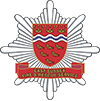East Sussex Fire and Rescue Service's Bexhill crews will be talking tyre safety on 20 October 2023.
They will be at Ravenside Retail Park Bexhill with Angels Mot & Service Centre Limited between 10am and midday to talk to shoppers about the importance of having tyres in a good condition as we start to approach the winter months.
The event is part of Tyre Safety Month - a campaign set up by UK charity TyreSafe which lasts for the duration of October. It focuses on ensuring drivers check their tyres regularly, to prevent any accidents.
This year, TyreSafe is focusing on emergency stops, with the campaign ‘If your tyres don’t stop you, what will?’.
To help you check your tyres, here are 3 key inspections you can easily make:
Why it’s essential to have safe tyres
Tyres are the only contact point between a car and the road surface, so they’re crucial for all driving, from braking to cornering. Having safe and legal tyres will ensure that you can stop safely, and prevent any potential accidents.
There are three areas you should check on your tyres regularly or before making a long journey.
Tyre Tread Depth
Tyre tread depth refers to the grooves on your tyres. The legal minimum tread depth is 1.6mm, so if the depth is below that the tyre is illegal and unsafe for driving. You should have your tyres replaced when the tread drops below 3mm, as you will notice a severe lack of grip.
Low tread depth can be very dangerous when driving. If the tread depth is below 3mm, there will be a decrease in traction. This could lead to a loss of performance or potentially skidding if the tyre can’t grip the road. There will also be a decrease in braking performance and an increase in stopping distance, which will negatively impact your fuel economy.
To easily check your tread depth, you can use a 20p coin. Simply place the coin into the tyre groove, and if the outer band of the coin is covered, your tyre is legal. If you can see the outer band of the coin, then your tyre has less than 1.6mm of tread depth and needs replacing immediately.
Tyre Pressure
For a tyre to work efficiently and safely, it must be inflated to the correct PSI. If a tyre is under-inflated, the steering will feel heavy, making handling more difficult. The tyres will also wear quicker, due to an increased surface area being in contact with the road. This means you’ll need to replace your tyres more frequently.
If a tyre is over-inflated, the tread in the middle of the tyre will wear faster than the outside of the tyre. This will again lead to the tyre needing to be replaced more frequently, as uneven tread will result in a loss of handling. The ride will also be stiffer, making for a more uncomfortable drive.
To find the correct tyre pressure for your car, you should look in the car manual. The correct tyre pressure will be listed there. It can also be found on the inside the car door.
Tyre Condition
According to a survey done by TyreSafe, there are over 9 million illegal tyres being used on UK roads. Any damage on your tyres could lead to a loss of handling, limited rolling resistance, or even a tyre blowout. Before making a long journey, you should check your tyres for these key things:
• Cracks
• Bulges
• Vibrations
• Excessive noise
If your tyres have any of these, it is not suitable for driving and could be a significant safety risk.
